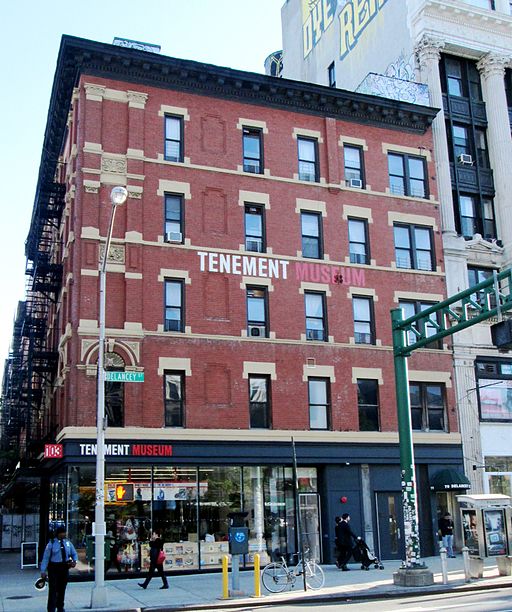|
By Laurie Lewis At New York’s Tenement Museum (www.tenement.org), you don’t just look at exhibits; you become part of them. The museum founders purchased a tenement building, researched past tenants, and restored many of the apartments to look as they might have when particular families lived there. You can’t walk through the building alone; you must take a tour with a guide, known in the museum’s parlance as an educator. It’s an apt term, because you learn so much from the guide: about tenement life, about the family that occupied the apartment at a point in time, and about society then and parallels today. I’ve taken most of the tours the Tenement Museum offers, and each time I leave with a better understanding and feel for life in a period we usually learn about only through reading. You get a much deeper appreciation from being in the very rooms that housed thousands of immigrants over the years—millions, when you consider all the people who lived in tenement apartments like the ones you see at the museum. Recognizing that words fall short of the experience of visiting a tenement, I’ll nonetheless try to capture some of the impressions from the tour I took recently of an Irish family’s home. The tenement building we visited is 97 Orchard Street, on the Lower East Side. Built in 1863, the building is one of the oldest tenements still standing. The Irish Outsiders tour focuses on the Moore family, who lived in the building for only a year, in 1869. Except for one other Irish family, all the occupants of the building at the time were German (which explains, in part, the name of the tour). Later tenants included Italians and East European Jews. We entered the tenement in a way you never want to enter someone’s home: through the back yard, a small plot with four privies. Standing in the little yard on a blustery March day, we didn’t have to think long about the challenges of answering the call of nature in inclement weather. Or the long flight down and the even harder ascent that Bridget Moore had to make to her fourth-floor home carrying sloshing buckets from the building’s only water source, near the toilets. For those who needed a little help imagining the burden, the museum has filled a pail with stones to approximate the weight of water. The educator, Sara, pointed out that Bridget probably carried two pails at a time, one in each hand, to avoid another trip, although she might have had difficulty doing that with three young children along. Bridget and Joseph Moore lived in a three-room apartment with their three daughters, the youngest an infant. The layout of their apartment was similar to that of all apartments in the building, indeed in most tenements. The living room of the Moore’s apartment faced the street; the living room of the back apartments overlooked the privy yard. A bedroom could hold a double bed and dresser but not much else. Between the living room and the bedroom was the kitchen. The stove was the only source of heat in the apartment. Although we saw fireplaces, they were too shallow to be functional, Sara explained, and were boarded up almost as soon as the tenement was built. The museum limits the size of tour groups. The twelve people in my group filled each of the small rooms, even the unfurnished rooms we saw in apartments that the museum has not restored. “Cozy” doesn’t begin to describe the feel. Previously, I had toured the restored apartment of a Jewish family that had lived in the building about thirty-five years after the Moores. The entire family, even the children, did piecework for the garment industry, and they were often joined in their home-based sweatshop by other workers. The apartment struck me as too dark to do delicate sewing, and I perspired just thinking about the heat in the airless space on a summer day with all those bodies and an iron going full blast to press the clothing under construction. Tenements like this were the first homes for most immigrants in New York through the early twentieth century. Although some people moved out as soon as they were able, others lived in these conditions for many years, and second-generation tenement families were not uncommon. It’s hard for modern-day Americans to appreciate what our ancestors endured, what was considered normal for the working class. A visit to the Tenement Museum is a great eye-opener. For more about tenements in New York, see our April 2018 newsletter. Comments are closed.
|


